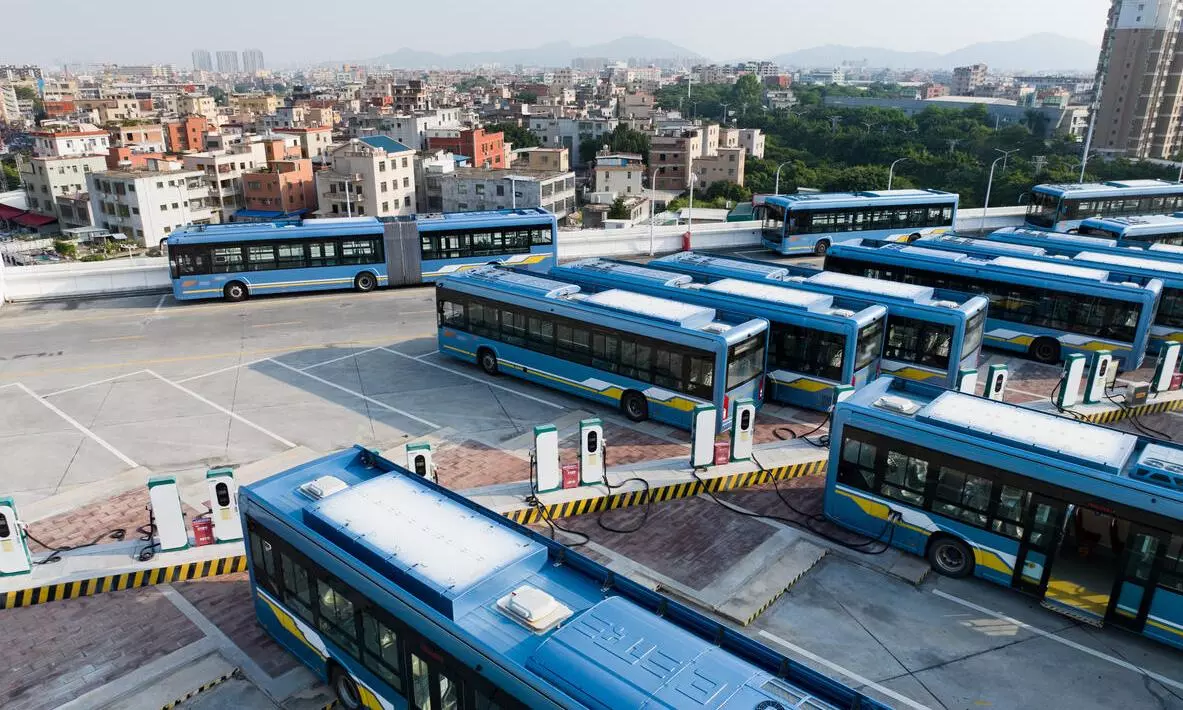
Bengal switches to CNG mode as e-vehicle push loses steam
Despite aim to raise e-bus fleet to 1,260 this year, battery issues, high costs goad WBTC to re-evaluate move and instead procure 200 GNG buses

The West Bengal government’s plan to switch to electric mode in the public transportation sector, particularly in Kolkata, by 2030, has started to falter.
The West Bengal Transport Corporation (WBTC), within three years of setting a target to increase its electric bus fleet to 1,260 by 2025, is re-evaluating its strategy.
Currently, it runs over 100 e-buses in Kolkata.
Reasons behind re-evaluation
Issues with battery life and range, high upfront costs, budgetary constraints and other operational challenges are causing the rethink, department sources said.
The first sign of policy shift, according to sources, was noticed on Friday (June 27) when the department initiated a process to procure 200 Compressed Natural Gas (CNG)-run buses, a move welcomed by environmentalists.
Also read: Spate of concessions fine but new EV policy leaves many questions unanswered
The decision to shift back to the CNG was taken after a high-level departmental meeting recently reviewed the cost-to-performance of the e-fleet.
Weak batteries
It was found that many of the buses are to be garaged because of the issues with their battery’s life and range. The batteries are expected to last 10-12 years. But robustness of the batteries has significantly reduced in some buses, particularly those procured in 2018-19, sources said. As a result, the mileage has gone down, increasing the operational cost.
An Ultra EV 7M battery is supposed to give a range of 160 km on a single charge. But within a few years of lifespan, the range drops to 70 to 80 km. One battery costs Rs 12-15 lakh, depending on the making.
Pricey spare parts
Another drawback of the e-buses, the department now realises, is their expensive spare parts, which are also not readily available as only a few key manufacturers dominate the market. “This creates a bottleneck in the supply chain, leading to operational hurdles,” said a WBTC official, who supervises a bus depot in the city.
A 12-metre-long e-bus costs around Rs 1.30 crore as against Rs 30-45 lakh for a normal one, depending on the model and manufacturer.
Also read: Eversource set to buy EV hail cab startup BluSmart, but conditions apply
The state transport department is expecting to get a fleet of at least 30 CNG-driven air conditioned buses before Durga Puja in September this year.
Jump to CNG not smooth
But the transition is not likely to be that smooth, as the city has limited CNG refuelling facilities, whereas the city has 14 charging stations for its e-buses. The state also took up a project to set up India's largest EV charging hub in Kolkata with 300 chargers at a single location, as over 1.25 lakh electric vehicles were registered in the state till last year.
The future of these charging centres might be affected if the state government sticks to its decision not to procure any more e-buses.
Environmentalists, however, say the shift is unlikely to have any adverse impact on the environment.
‘More dependence on thermal power’
Since electricity to charge the batteries is not sourced from renewable energy, and recycling industries are not set up to take care of e-waste, the electric mobility push was not helping much in tackling the pollution crisis, said Milan Dutta, a journalist-turned environmentalist.
Also read: EV prices to match petrol cars in 6 months: Gadkari
“The electric vehicle push helped reduce emissions of carbon dioxide, but not overall pollution,” he added.
The share of coal-based thermal power in the country’s energy mix is currently 47 per cent and according to the central government’s policy think-tank NITI Aayog, the share will rise to 51 per cent by 2030.
The push for e-vehicles only increases India’s dependency on thermal power.
In the absence of a proper disposal mechanism to dispose of the lithium-ion batteries that are made of a reactive alkali metal, the e-batteries could pose a greater environmental crisis, he pointed out.

